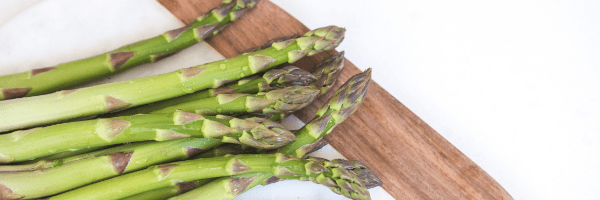What foodstuff can help you lose weight, lower your risk of heart disease, diabetes, autoimmune disease and cancer while generally improving your how you feel? Good old fiber. You’ve probably been told to “get plenty of fiber” in your diet, but exactly how much and what kind is a mystery to most and there is a lot more to fiber than meets the eye.
Dietary fiber is the stuff we eat that does not get fully digested or absorbed into the bloodstream, essentially passing right through us. Fiber is generally made up of long chains of sugars called polysaccharides, and humans lack the enzymes needed to break these polysaccharides into small enough pieces to absorb. It’s the crispy, woody, stringy substance notable in fruits and vegetables. It’s also the gummy, chewy, thickening substance found in grains and legumes.
Soluble fiber dissolves in water and forms a gel-like substance. For example a soluble fiber called “pectin” is used to thicken fruit juice into jelly. The bacteria that live in the intestine are able to ferment and break down soluble fiber.
Insoluble fiber does not dissolve in water, but soaks up water like a sponge. The intestinal bacteria are not able to ferment and break down insoluble fiber so it does literally pass right through us.
High soluble fiber foods include beans, peas, oats, barley, rye, some fruits such as figs, plums, prunes, berries, bananas, apples and pears, certain vegetables such as broccoli, asparagus, and artichokes, roots such as leeks, onions, garlic and potatoes, psyllium and flax seeds, and nuts.
Foods rich in insoluble fiber include whole grains, especially wheat and corn, beans, peas, nuts and seeds, certain vegetables such as green beans, cauliflower, celery, and the skins of a few fruits such as grapes and tomatoes.
Medical benefits of fiber
Both types of fiber will increase in size once eaten and thus lead to a sense of fullness sooner than non-fiber carbohydrates. Soluble fiber forms a gel like substance that slows stomach emptying and buffers the breakdown of sugars leading to better blood sugar control. It also binds to cholesterol preventing it from being absorbed back into the bloodstream.
Insoluble fiber is what most people think of when you say “fiber” as it is associated with adding bulk to the stool and speeding the passage of food through the colon, thus helping to regulate regular bowel movements. It too helps lower blood sugar.
One of the most important, and fascinating roles of fiber is providing fuel for the bacteria that live in the intestine, especially the colon. The first part of the colon is a bacteria-rich fermentation machine that converts soluble fibers into short chain fatty acids, such as acetic, propionic and n-butyric acid. The acidic environment nourishes friendly bacteria while discouraging pathogens. The fatty acids are used by colon cells for fuel and help promote a healthy gut lining. This fermentation also produces “gas” including carbon dioxide, hydrogen and methane.
There are over a 100 trillion bacteria that live in our intestinal tract – more than the 10 trillion cells in our body. If we feed them enough fiber, they will support and modulate our immune system, defend against infections, help break down our food, generate essential vitamins, metabolize hormones and bile acids, supply the intestine with energy, and stimulate the normal motility of the intestine.
Prebiotics are another name for the fermentable fibers that nourish and support the beneficial bacteria. The best types for encouraging good bacteria are the fructans found in foods such as Jerusalem artichoke, leeks, white onion, garlic, bananas and asparagus. Pectins found in the skin of apples and pears are also good prebiotics.
The complex communities of bacteria in the gut depend on certain nutrients and behaviors that have been forged over thousands of years. These bacteria are not parasitic passengers, but rather symbiotic participants in our overall health. And it matters a great deal what we feed them. Dietary research shows that a low fiber diet will quickly starve the beneficial bacteria while creating an environment for a hostile takeover of more pathogenic bacteria.
A healthy amount of fiber intake each day is about 25-30 grams but on average we Americans are getting only half this amount. Increase your fiber intake by having oats or barley cereal every day and add a handful of ground flax seeds. Eat that “apple a day”. Enjoy lightly sautéed leeks, onion and garlic. If you increase your fiber intake too quickly it may produce uncomfortable gas and cramping, so pace yourself.
If you wish to improve your health, lose weight, or just feel better, try adding more fiber to your diet. Your gut and the trillions of little helpers that live there will thank you.
Author
Scott Rollins, MD, is Board Certified with the American Board of Family Practice and the American Board of Anti-Aging and Regenerative Medicine. He specializes in bioidentical hormone replacement for men and women, thyroid and adrenal disorders, fibromyalgia and other complex medical conditions. He is founder and medical director of the Integrative Medicine Center of Western Colorado (www.imcwc.com) and Bellezza Laser Aesthetics (www.bellezzalaser.com). Call (970) 245-6911 for an appointment or more information.


